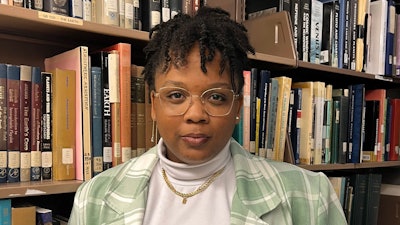
Jordan Ealy counts herself among the stargazers who delight in watching specks of light twinkle against the darkness of outer space. But her scholarship focuses on those stars she can barely see.
“Yeah, I study small stars,” says Ealy, a Ph.D. candidate in astronomy at the University of Maryland, College Park.
“M dwarfs are the most numerous stars in our galaxy even though you wouldn’t be able to see them if you just went outside,” she explains. “Their small sizes and cool temperatures mean we can’t see them with the naked eye, but they are also the stars that are most likely to host planets outside of our solar system.”
Ealy studies the power and frequency of magnetic activity on low-mass stars. By studying the exoplanet systems, she says, scientists learned they cannot just scale down the Sun in models to simulate conditions on those planets.
“Getting a better idea of how the variability of these stars changes over their lifetimes and how that informs our models of developing planets is the goal of my thesis,” says Ealy. “It’s a huge question with lots of different factors involved, and my work is just a piece of that.”
Aspiring to become a researcher and science communicator, Ealy is driven to understand humanity and science’s place in the world as it is.
“The work that I am doing is actively contributing to that,” she says. “It has a tendency to inspire, and I really want to make sure that we don’t lose that, especially with everything that’s going on at the moment.”

















